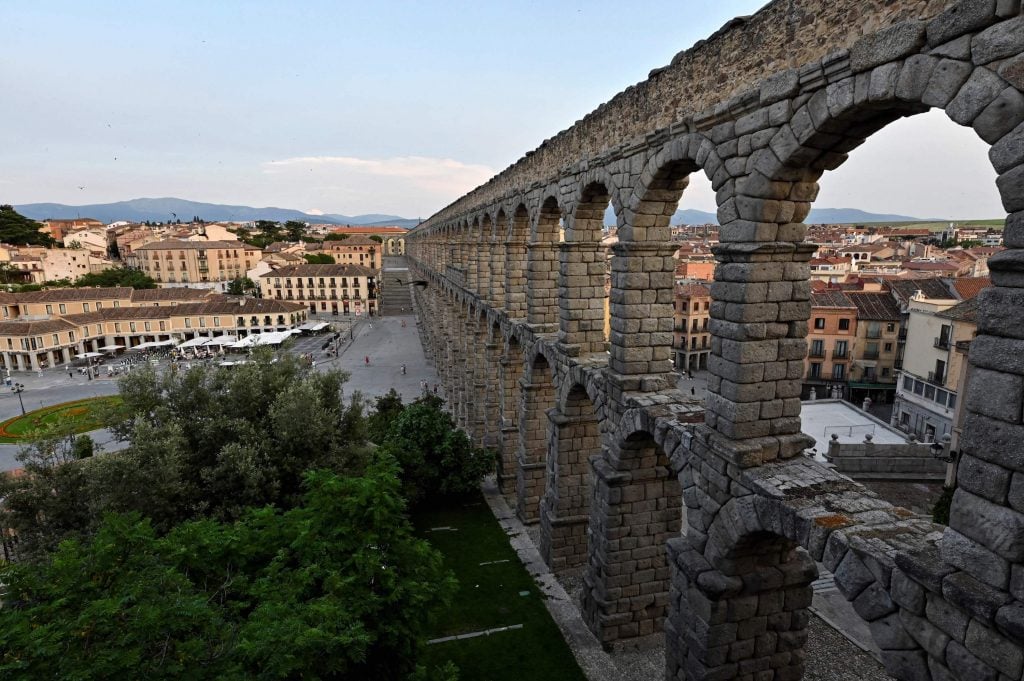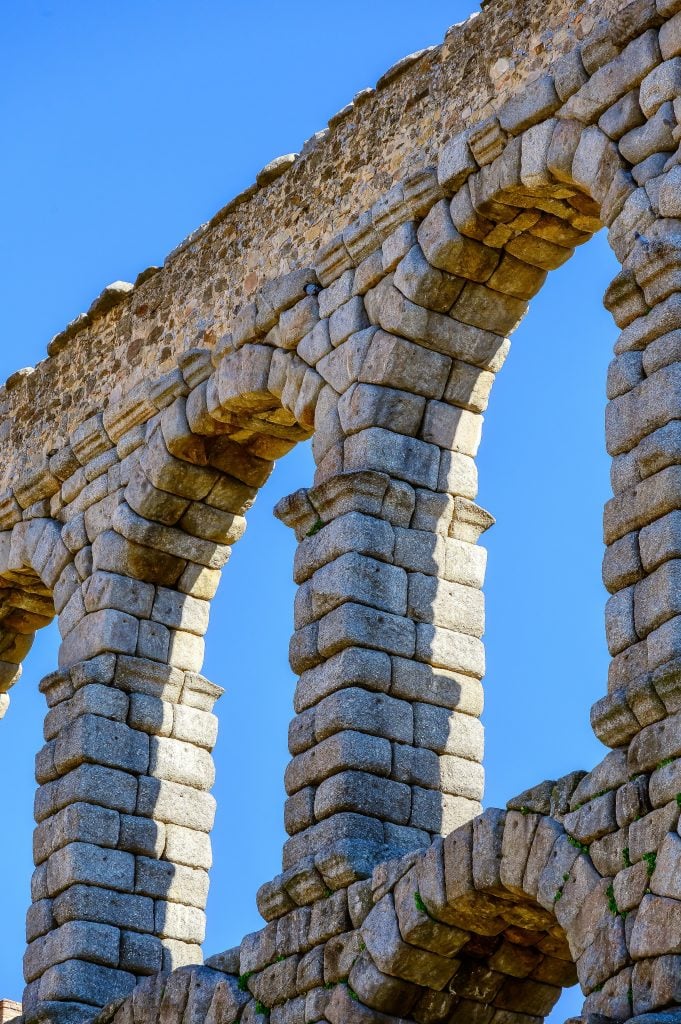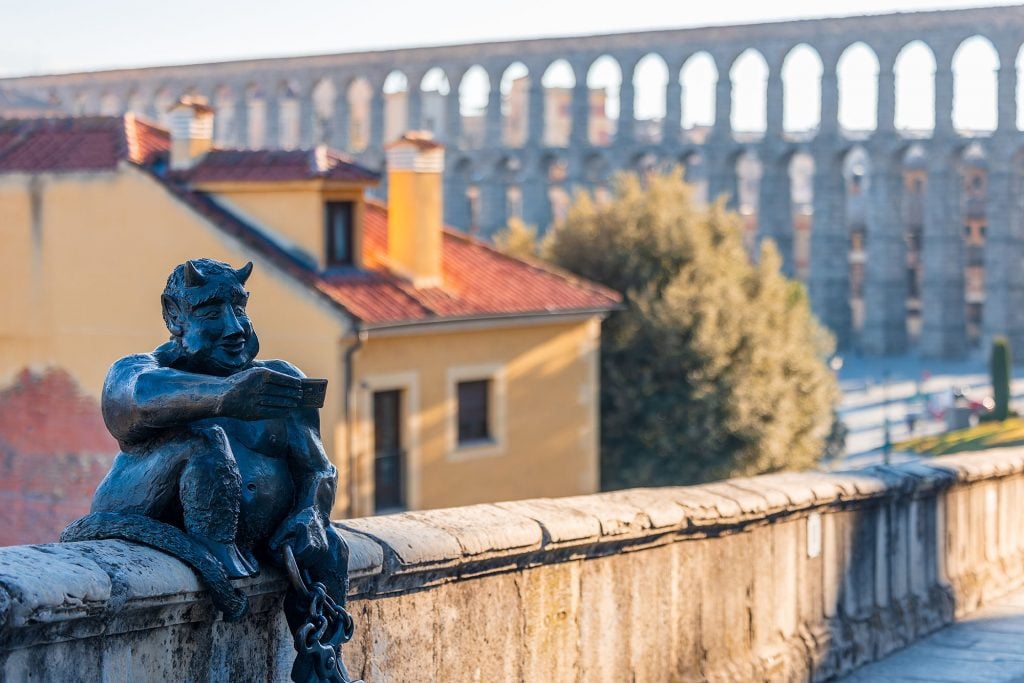Archaeology & History
Huge! A Roman Engineering Marvel Reaching Across a Spanish City
Made from more than 20,000 blocks of granite, the aqueduct doesn't use mortar.

The Segovia aqueduct was a statement of intent from Rome to its conquered subjects in Hispania. After two centuries of conflict, Augustus finally succeeded in annexing the Iberian Peninsula to the Roman Empire in 19 C.E.
The Romans wanted to let the inhabitants know they were invested for the long haul and what followed was an imposition of Roman culture on the territory’s disparate peoples. Latin replaced the indigenous languages, local polytheistic traditions were covered over, and Roman laws reigned over the provinces. The Romans also imposed themselves physically, building a network of roads so that trade and troops could move between remodeled towns complete with forums, baths, and temples.
In Segovia, the Romans built an aqueduct that stands as arguably their greatest architectural legacy from six centuries in Spain. After drawing water from the Frio River, the aqueduct runs underground for some 10 miles before appearing in Segovia as a grand, elegant beast that strides for nearly 2,400-feet across the town. Comprised of more than 20,000 blocks of granite and erected without a lick of mortar, at its highest point the aqueduct reaches more than 90-feet high with narrow, double arches.

The elevated section of the aqueduct includes an arcade of 167 arches. Photo: Getty Images.
The engineering precision required to construct Segovia’s aqueduct is beyond question (it remained in use until the late 1970s). However, its reason for being built in the first place remains something of a mystery. Though the region had played a role in wars between the Romans and Iberian tribes in the second century B.C.E., there’s surprisingly little evidence of Segovia’s importance to the Romans, though it’s possible much of the archaeological record was destroyed by the Visigoths and Moors. The most that can be said is that Segovia occupied a prominent position over the Eresma and Clamores rivers.
The second unanswered question surrounding Segovia is who built it. According to local folklore, it was built by the devil after a deal gone awry. Tired of trudging up and down the city streets to fetch water, a young girl offered her soul to the devil if he would ease her toil. The devil promised to build an aqueduct before the cockerel crowed the following morning. The girl threw herself into prayer and a storm arrived, which prevented the devil from finishing his task—in 2019, controversy erupted in Segovia after the local council commissioned a bronze statue of the devil as a public attraction.

The “Selfie Devil” statue in Segovia, with the Aqueducts in the background. Photo: Salvador Maniquiz / Shutterstock.
Moreover, historians have long debated which of the Roman emperors ordered its construction, since neither textural records nor archaeological evidence prove it conclusive. Initially, it was believed Emperor Domitian (81 to 96 C.E.) was responsible, but analysis suggested the aqueduct had been built later during the reign or Trajan (98 to 117 C.E.). A competing theory is that the aqueduct was constructed over a period of 70 years and while Trajan may have had it repaired or finished, the project likely started under Vespasian (69 to 79 C.E.). The style of the aqueduct is said to be consistent with those Vespasian built with some frequency across Hispania.
The key to answering the question may rest in the grounds of Colegio Claret, a Catholic school in Segovia. While building a sports field in the 1980s, builders uncovered Roman artifacts as well as a commemorative column marked with the start of the aqueduct’s construction. The relics were dated to the Vespasian period, but the column was too big to remove and so it remains buried. Colegio Claret is not keen to play host to future archaeological excavations.
Sometimes, archaeology gets big. In Huge! we delve deep into the world’s largest, towering, most epic monuments. Who built them? How did they get there? Why so big?





